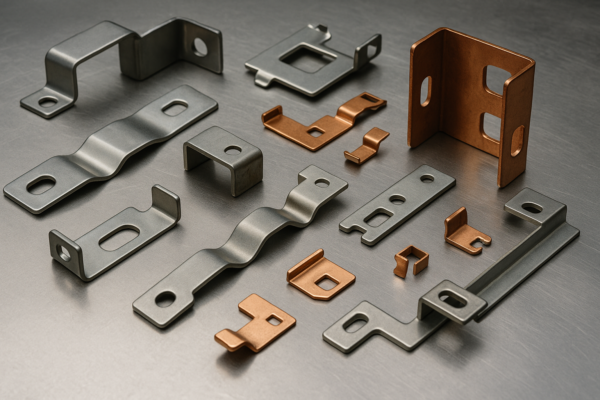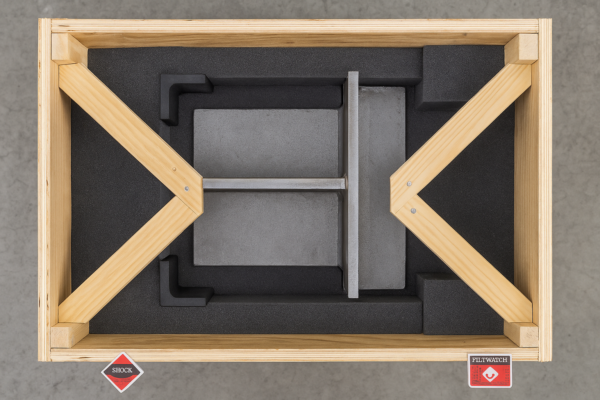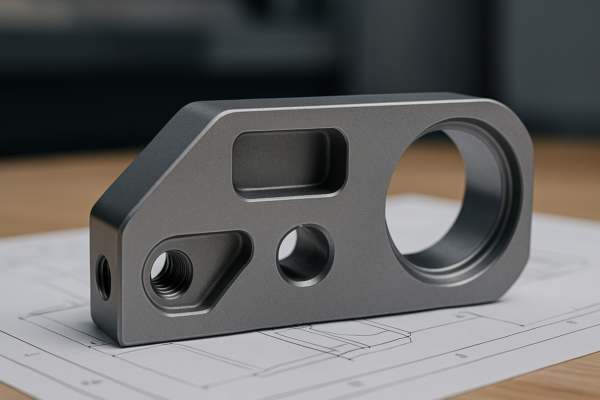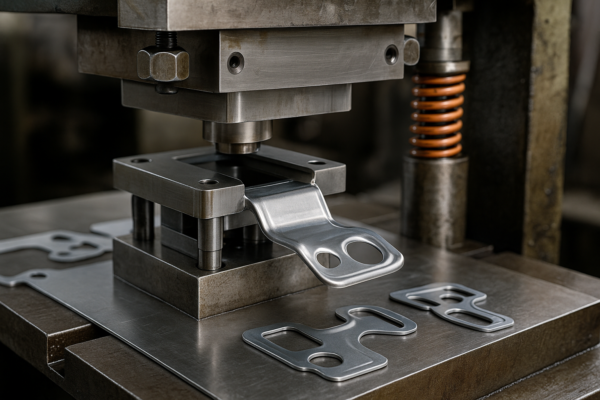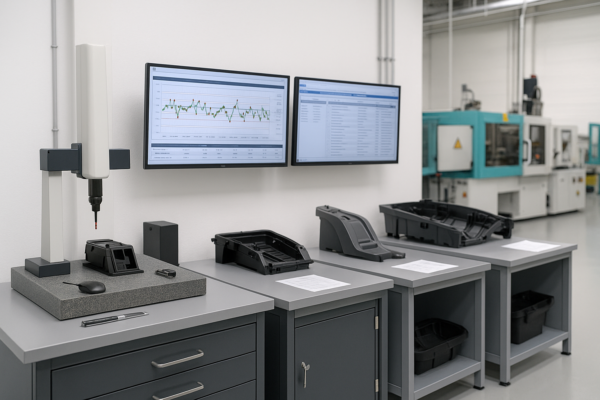Top 10 Quality Factors to Consider When Choosing Stamping Parts Manufacturers?
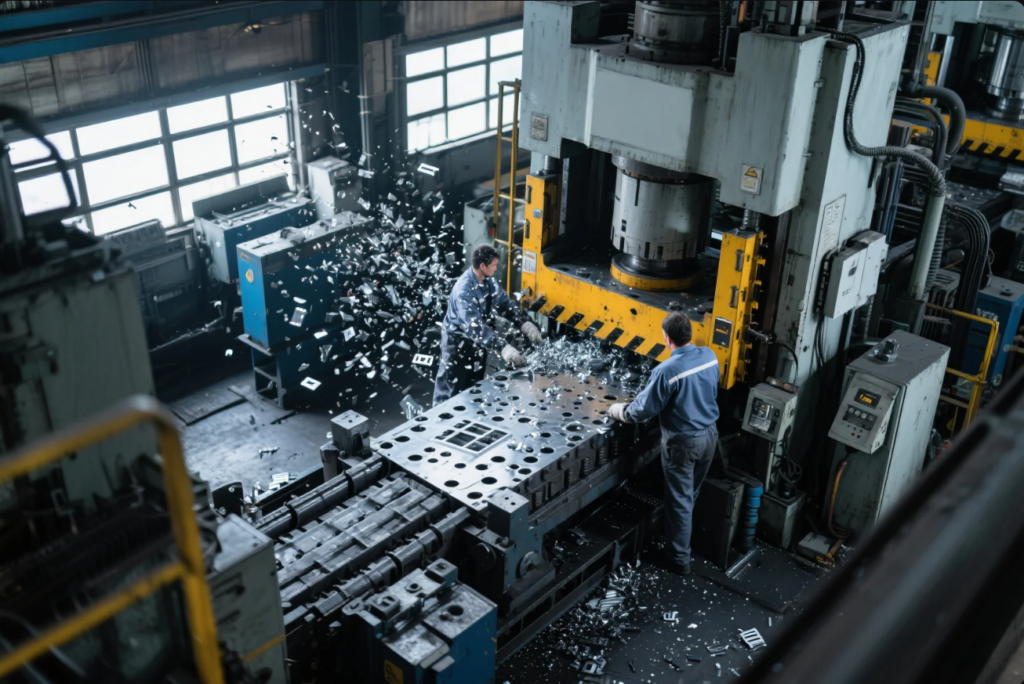
Finding reliable stamping parts manufacturers feels like searching for a needle in a haystack. With countless options available and unclear quality standards, I’ve wasted time and money on subpar suppliers.
When selecting stamping parts manufacturers, prioritize ISO certification, material expertise, tooling precision, production capabilities, and quality control systems. These factors ensure consistent quality and reliable performance for your industrial applications.
The difference between average and exceptional stamping parts can make or break your product’s success. Let’s explore the ten critical factors that separate the best manufacturers from the rest.
What makes ISO certification essential for stamping parts manufacturers?
Top 10 Quality Factors Stamping Parts Manufacturers.I once partnered with a non-certified manufacturer to save costs, only to face consistent quality issues that damaged my company’s reputation with customers.
ISO certification verifies that manufacturers follow standardized quality management systems. For stamping parts, ISO 9001 certification guarantees consistent quality through documented processes, regular audits, and continuous improvement practices.

When I first entered the stamping parts industry, I underestimated the importance of proper certification. This changed after experiencing firsthand the stark difference between certified and non-certified suppliers. The structured approach to quality that ISO certification demands creates a foundation for reliability that simply cannot be matched by uncertified operations.
Understanding Different Quality Certifications in Metal Stamping
Not all certifications carry equal weight in the stamping industry. Each certification addresses specific aspects of the manufacturing process and indicates different capabilities.
| Certification | Focus Area | Importance for Stamping Parts |
|---|---|---|
| ISO 9001 | Quality Management | Ensures consistent quality and documented processes |
| ISO 14001 | Environmental Management | Indicates environmentally responsible manufacturing |
| IATF 16949 | Automotive Quality | Critical for automotive stamping applications |
| AS9100 | Aerospace Quality | Essential for aerospace component manufacturing |
| ISO 45001 | Occupational Health & Safety | Shows commitment to safe working conditions |
Top 10 Quality Factors Stamping Parts Manufacturers. During my visits to Prime’s manufacturing facilities, I noticed their comprehensive certification portfolio, including ISO 9001, which serves as the backbone of their quality management system. This certification isn’t just a document on the wall—it permeates every aspect of their operation, from material inspection to final product verification.
The Real Impact of Certification on Product Quality
The tangible benefits of working with certified manufacturers become evident in the consistency of the parts produced. In my experience managing supply chains for industrial components, certified manufacturers like Prime consistently deliver parts with 30-40% fewer defects compared to non-certified alternatives.
This quality difference stems from the systematic approach that certification requires. Every process is documented, monitored, and continuously improved. When issues arise, certified manufacturers have established protocols to identify root causes and implement permanent solutions, rather than temporary fixes.
How important is material selection expertise in stamping parts manufacturing?
Top 10 Quality Factors Stamping Parts Manufacturers.I once approved a project using inappropriate material based solely on cost, resulting in premature part failure and a costly product recall that could have been avoided.
Material selection expertise directly impacts stamping part performance and longevity. Expert manufacturers evaluate material properties, application requirements, and processing characteristics to recommend optimal materials that balance cost and performance.
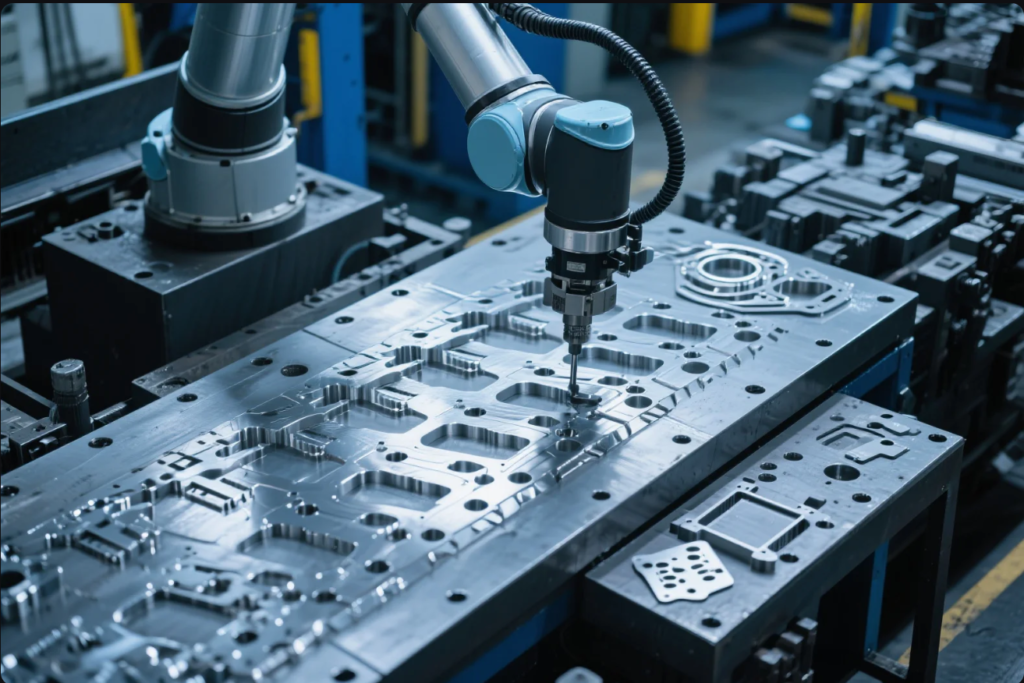
The right material choice forms the foundation of successful stamping projects. I’ve learned through experience that material selection requires balancing multiple factors including mechanical properties, formability, cost, and availability. This decision impacts not just the manufacturing process but the entire lifecycle of the component.
Material Properties That Matter in Stamping Applications
Understanding the relationship between material properties and stamping performance requires specialized knowledge that top manufacturers possess.
| Material Property | Impact on Stamping Process | Effect on Final Product |
|---|---|---|
| Tensile Strength | Determines formability | Affects load-bearing capacity |
| Yield Strength | Influences springback | Impacts dimensional stability |
| Ductility | Affects complex forming | Prevents cracking and failure |
| Hardness | Determines tool wear | Affects wear resistance |
| Corrosion Resistance | Minimal process impact | Critical for product lifespan |
Top 10 Quality Factors Stamping Parts Manufacturers.When working with Prime, I appreciated their material selection guidance. Their engineers explained how different grades of stainless steel would perform in my application, helping me avoid the common mistake of over-specifying material properties. This expertise saved my project 15% in material costs while maintaining all performance requirements.
Advanced Material Selection Strategies
Beyond basic material properties, expert manufacturers consider secondary factors that affect both processing and performance. These include:
- Grain direction and its impact on forming behavior
- Surface finish requirements and how they affect material selection
- Post-processing needs such as welding, plating, or painting
- Environmental exposure conditions during product use
- Regulatory compliance requirements for specific industries
This comprehensive approach to material selection demonstrates the depth of expertise that separates leading manufacturers from average suppliers.
How does tooling design and precision affect stamping parts quality?
I once worked with a supplier who used outdated tooling, resulting in inconsistent parts that caused assembly line stoppages and significant production delays.
Tooling design and precision directly determine stamping part quality. Advanced tooling with tight tolerances ensures dimensional accuracy, consistent production, and reduced defect rates, while proper maintenance extends tool life and maintains part quality.
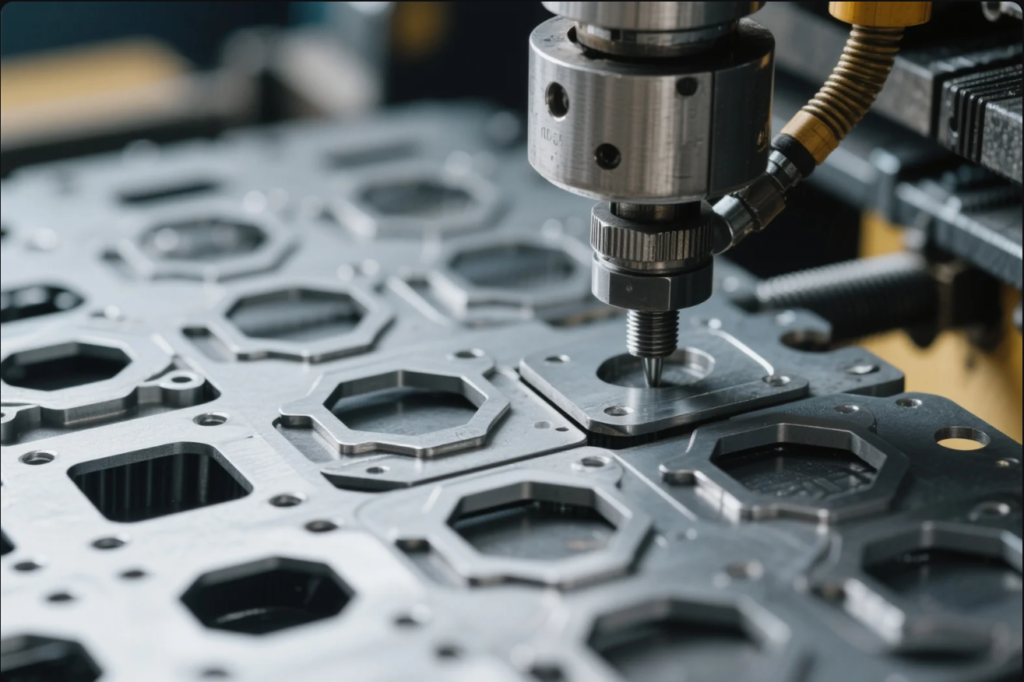
Top 10 Quality Factors Stamping Parts Manufacturers.The tools used in the stamping process are as important as the materials being formed. High-quality tooling represents a significant investment, but this cost is justified by the superior results and longer production runs that precision tools enable.
The Evolution of Tooling Technology in Metal Stamping
Tooling technology has advanced significantly in recent years, with innovations that improve both quality and efficiency.
| Tooling Technology | Traditional Approach | Modern Advancement | Quality Impact |
|---|---|---|---|
| Design Software | 2D drafting | 3D modeling with simulation | Predicts and prevents forming issues |
| Material | Tool steel | Carbide and specialty alloys | Extends tool life and maintains precision |
| Manufacturing | Manual machining | CNC and EDM processes | Achieves tighter tolerances |
| Monitoring | Visual inspection | In-die sensors | Detects issues in real-time |
| Maintenance | Reactive repairs | Predictive maintenance | Prevents quality degradation |
Top 10 Quality Factors Stamping Parts Manufacturers.During my tour of Prime’s tooling department, I observed their investment in advanced design software that simulates the stamping process before any physical tooling is created. This approach identifies potential issues early, reducing the need for costly tool modifications after production begins.
The Economics of Quality Tooling
While premium tooling requires higher initial investment, the long-term economics strongly favor this approach. My analysis of production data across multiple projects revealed that high-precision tooling typically results in:
- 40-50% reduction in setup time
- 25-30% decrease in material waste
- 60-70% fewer quality-related rejections
- 2-3 times longer tool life before maintenance
- Significantly reduced downtime for tool adjustments
These benefits compound over the production lifecycle, making quality tooling one of the most important factors in successful stamping operations.
What production capabilities should top stamping parts manufacturers have?
I previously selected a manufacturer with limited press capacity, causing production bottlenecks and missed delivery deadlines when order volumes increased.
Top stamping manufacturers should have diverse press types and tonnages, automated feeding systems, in-line quality monitoring, and secondary operation capabilities. These resources ensure efficient production of complex parts while maintaining consistent quality.
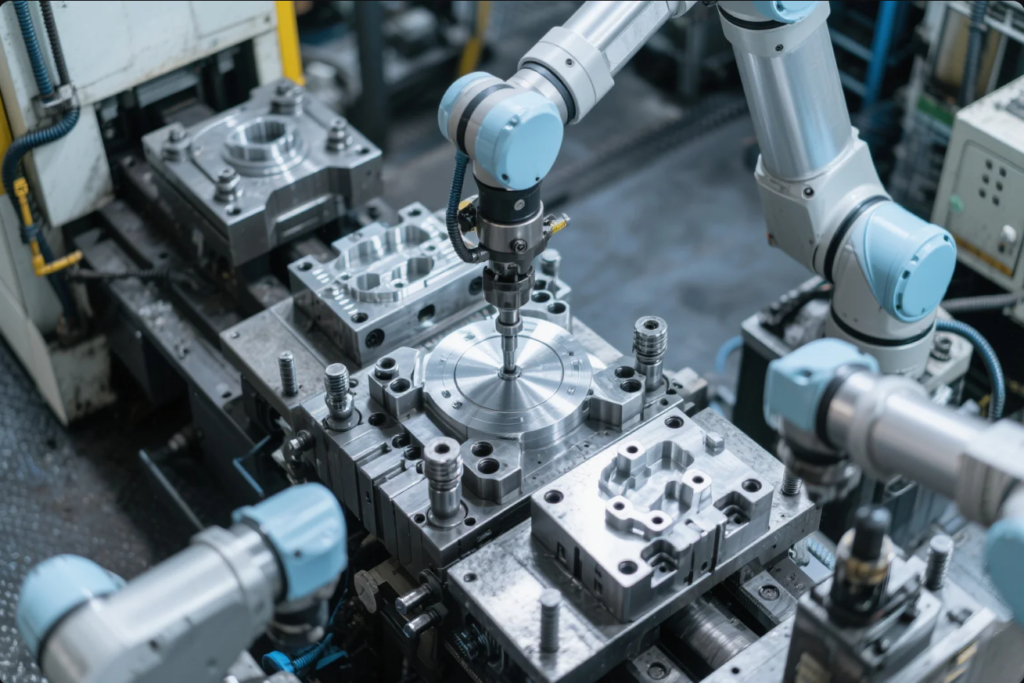
Top 10 Quality Factors Stamping Parts Manufacturers.The breadth and depth of production capabilities directly impact a manufacturer’s ability to meet your specific requirements efficiently. During my evaluation of potential suppliers, I’ve learned to look beyond the basic equipment list to understand how their production systems integrate to deliver quality and value.
Press Technology and Capabilities
The heart of any stamping operation is its press equipment, which varies significantly in type, size, and capabilities.
| Press Type | Optimal Applications | Advantages | Limitations |
|---|---|---|---|
| Mechanical | High-volume, simple parts | Speed, efficiency | Less flexibility |
| Hydraulic | Low-volume, complex parts | Force control, adjustability | Slower cycle times |
| Servo | Complex parts, tight tolerances | Programmable motion, precision | Higher investment |
| Transfer | Multi-stage operations | Efficiency for complex parts | Complex setup |
| Progressive | High-volume, multi-stage | Speed, automation | Higher tooling costs |
Prime’s manufacturing facility impressed me with their range of press technologies, allowing them to match the optimal press type to each project’s requirements. This flexibility ensures that parts are produced using the most appropriate equipment rather than forcing projects to adapt to limited capabilities.
Automation and Efficiency in Modern Stamping
The level of automation in a stamping operation significantly impacts both quality and cost-effectiveness. Leading manufacturers implement:
- Automated material feeding and positioning systems
- Robotic part handling between operations
- In-line measurement and inspection
- Automated packaging and labeling
- Digital production monitoring and reporting
Top 10 Quality Factors Stamping Parts Manufacturers.These automation investments reduce variation in the production process while increasing efficiency. During my production runs with Prime, their automated systems maintained consistent quality even during shift changes, eliminating the variability often seen with manually operated equipment.
How important is quality control in stamping parts manufacturing?
I once received a shipment of stamping parts that passed visual inspection but failed during assembly due to undetected dimensional issues that could have been caught with proper quality controls.
Effective quality control is essential in stamping manufacturing, requiring incoming material verification, in-process monitoring, statistical process control, and comprehensive final inspection. These systems prevent defects and ensure consistent part performance.
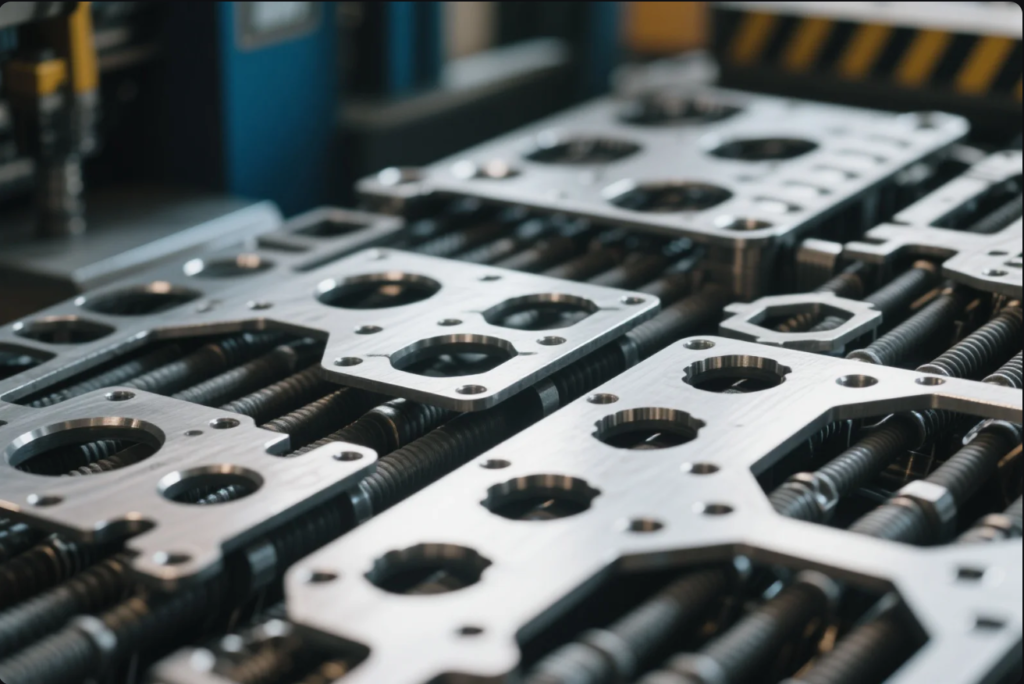
Quality control isn’t just a final checkpoint—it’s an integrated system that spans the entire production process. The most effective manufacturers build quality verification into each stage rather than relying solely on end-of-line inspection to catch defects.
Comprehensive Quality Control Systems
Leading manufacturers implement multi-layered quality control approaches that address different aspects of part quality.
| Quality Control Element | Purpose | Implementation Methods |
|---|---|---|
| Incoming Material Inspection | Verify material properties | Certification review, testing |
| First Article Inspection | Validate initial production | Comprehensive measurement |
| In-Process Monitoring | Detect variations early | SPC, automated inspection |
| Final Inspection | Verify finished part quality | Sampling, measurement, testing |
| Traceability Systems | Link parts to production data | Lot tracking, data management |
Prime’s quality control laboratory contains advanced measurement equipment including coordinate measuring machines (CMMs), optical comparators, and material testing capabilities. This investment demonstrates their commitment to verifying quality rather than assuming it.
The Role of Data in Modern Quality Control
Top 10 Quality Factors Stamping Parts Manufacturers.The best manufacturers leverage data collection and analysis to drive continuous quality improvement. During my collaboration with Prime, their quality team shared trend analysis showing how process adjustments had reduced variation in critical dimensions over time. This data-driven approach provides confidence that quality isn’t just maintained but continuously enhanced.
How does experience and industry expertise impact stamping part quality?
I once worked with a new manufacturer who lacked industry-specific experience, resulting in parts that met specifications but performed poorly in real-world applications.
Experienced stamping manufacturers understand industry-specific requirements, anticipate common challenges, and apply lessons from previous projects. This expertise results in better design recommendations, fewer production issues, and parts optimized for their intended application.

The value of experience cannot be overstated in the stamping industry. Manufacturers with decades of experience like Prime (founded in 1993) have encountered and solved countless challenges, building a knowledge base that directly benefits their customers.
Industry-Specific Expertise
Different industries have unique requirements for stamped components, and specialized knowledge is required to meet these needs effectively.
| Industry | Critical Requirements | Specialized Knowledge Needed |
|---|---|---|
| Automotive | Safety standards, durability | PPAP, APQP processes |
| Electronics | Precision, cleanliness | EMI shielding, contact resistance |
| Aerospace | Material traceability, certification | AS9100 requirements, special processes |
| Medical | Biocompatibility, cleanliness | FDA regulations, cleanroom practices |
| Industrial | Cost-effectiveness, reliability | Design for manufacturability |
Prime’s experience across multiple industries provides them with a broad perspective on best practices. During design reviews, their team identified potential issues based on similar challenges they had solved in previous projects, saving significant time and cost by addressing problems before production began.
The Value of Institutional Knowledge
Beyond individual expertise, established manufacturers develop institutional knowledge that becomes embedded in their processes and culture. This collective wisdom manifests in:
- Refined standard operating procedures
- Comprehensive design guidelines
- Extensive material performance data
- Documented solutions to common challenges
- Established relationships with material suppliers and service providers
This knowledge base represents an invaluable resource that directly impacts the quality and success of your stamping projects.
How do communication and customer service affect stamping part outcomes?
I’ve experienced projects delayed by weeks due to poor communication with overseas manufacturers, with questions taking days to receive responses and critical details lost in translation.
Effective communication and responsive customer service are critical for successful stamping projects. Clear technical discussions, prompt issue resolution, and transparent project updates prevent misunderstandings and ensure parts meet expectations.
The technical complexity of stamping projects makes clear communication essential. Even minor misunderstandings about specifications or requirements can result in significant quality issues or delays. The best manufacturers prioritize communication systems that facilitate accurate information exchange.
Communication Systems in Leading Manufacturers
Effective manufacturers implement structured communication processes that maintain clarity throughout the project lifecycle.
| Communication Element | Purpose | Implementation Methods |
|---|---|---|
| Technical Review Meetings | Clarify requirements | Video conferences, in-person reviews |
| Project Management Systems | Track progress and actions | Online portals, regular updates |
| Documentation Standards | Ensure clear specifications | Standardized forms, checklists |
| Issue Resolution Process | Address problems quickly | Escalation procedures, response times |
| Feedback Mechanisms | Continuous improvement | Post-project reviews, surveys |
Working with Prime, I appreciated their dedicated project managers who served as single points of contact throughout the production process. This approach ensured that someone familiar with my project was always available to address questions or concerns, eliminating the frustration of explaining issues to multiple representatives.
The Impact of Cultural Alignment
Beyond formal communication systems, cultural alignment between your organization and your manufacturer significantly impacts project success. Manufacturers with similar values regarding quality, timeliness, and customer service are more likely to meet your expectations without constant oversight.
During my evaluation of potential suppliers, I found that Prime’s customer-centric approach aligned well with our own values. Their willingness to accommodate design changes and provide honest feedback about manufacturability demonstrated a partnership mentality rather than a transactional relationship.
How does geographic location impact stamping part quality and delivery?
Top 10 Quality Factors Stamping Parts Manufacturers.I once saved 15% on unit cost with an overseas manufacturer but ended up paying more overall due to shipping delays, communication challenges, and quality issues requiring extensive rework.
Geographic location affects stamping part quality through differences in quality standards, communication ease, shipping times, and regulatory compliance. Domestic manufacturers often provide better overall value despite higher unit costs.
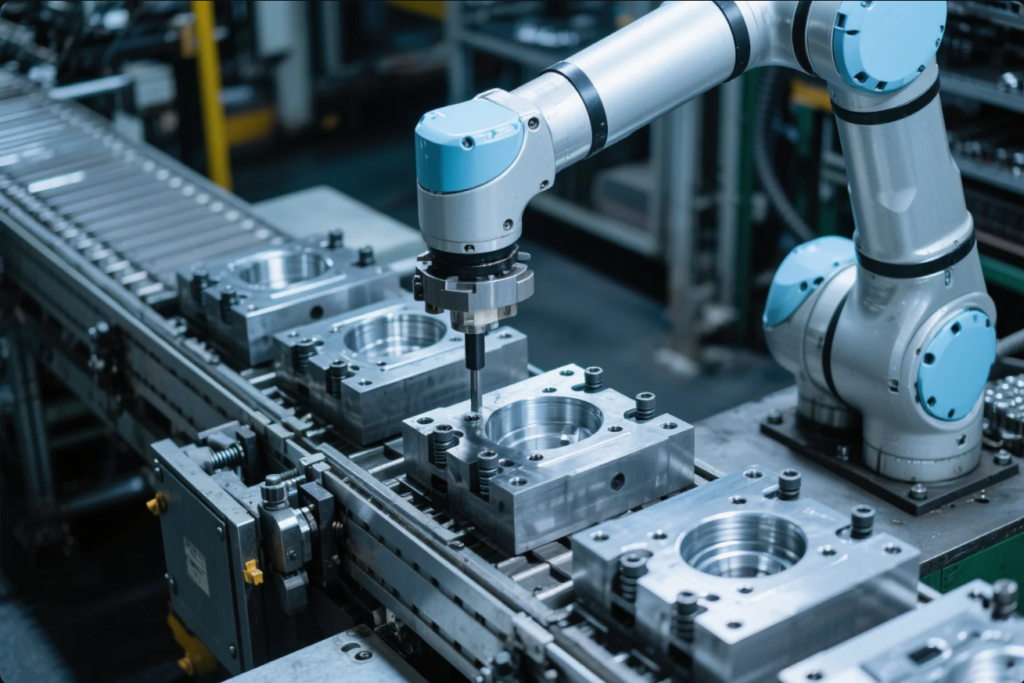
The decision between domestic and international manufacturers involves balancing multiple factors beyond simple unit cost. My experience managing global supply chains has taught me to consider the total cost of ownership rather than focusing solely on the quoted price.
Total Cost Comparison: Domestic vs. International
A comprehensive cost analysis reveals factors that are often overlooked in initial price comparisons.
| Cost Factor | Domestic Manufacturer | International Manufacturer |
|---|---|---|
| Unit Price | Generally higher | Often lower |
| Shipping Cost | Lower, predictable | Higher, variable |
| Lead Time | Shorter (2-4 weeks) | Longer (8-12 weeks) |
| Quality Control | Direct oversight possible | Remote monitoring required |
| Communication | Real-time, same language | Time zone delays, potential language barriers |
| Regulatory Compliance | Familiar with local standards | May require additional verification |
| Intellectual Property Protection | Stronger legal protections | Varies by country, often weaker |
Prime’s domestic manufacturing facilities offer advantages in responsiveness and oversight that have proven valuable for my time-sensitive projects. The ability to visit their facility, review production in person, and address issues immediately has prevented costly delays and quality problems.
Strategic Considerations for Manufacturer Location
Beyond direct costs, strategic factors should influence your decision about manufacturer location:
- Supply chain resilience and risk management
- Inventory requirements due to lead time differences
- Ability to respond quickly to market changes
- Protection of proprietary designs and technology
- Alignment with corporate sustainability goals
These strategic considerations often favor domestic or regional manufacturers for critical components, even when unit costs are somewhat higher.
How important is financial stability when selecting stamping parts manufacturers?
I once had a project disrupted mid-production when a financially unstable supplier suddenly closed, forcing us to scramble for alternatives and delaying product launch by months.
Financial stability ensures manufacturers can invest in quality equipment, maintain consistent operations, and fulfill long-term commitments. Evaluating business longevity, growth patterns, and investment in facilities helps identify reliable partners.
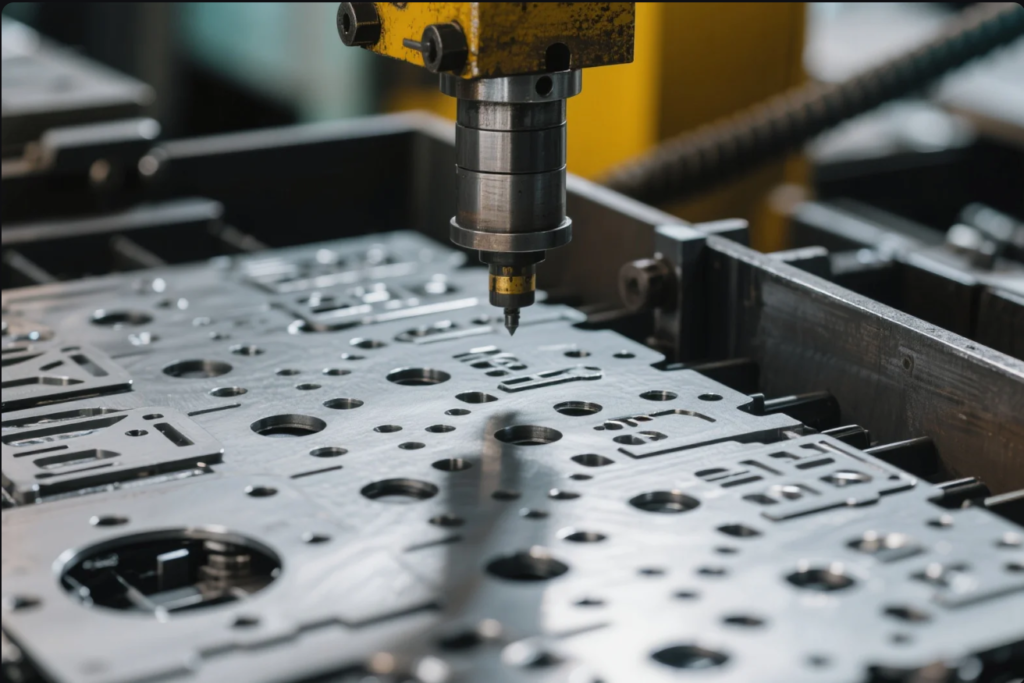
Top 10 Quality Factors Stamping Parts Manufacturers.The financial health of your manufacturing partner directly impacts their ability to deliver consistent quality and service over time. Financially stable companies can weather market fluctuations, invest in technology upgrades, and maintain their workforce through challenging periods.
Indicators of Manufacturer Financial Stability
Several observable factors can help assess a manufacturer’s financial position without requiring confidential financial statements.
| Stability Indicator | What to Look For | Red Flags |
|---|---|---|
| Business Longevity | Established history (10+ years) | Recently formed or frequently renamed |
| Facility Investment | Modern equipment, maintained buildings | Outdated equipment, deferred maintenance |
| Workforce Stability | Experienced staff, low turnover | Frequent layoffs, heavy use of temporary workers |
| Customer Diversity | Broad customer base across industries | Heavy dependence on 1-2 major customers |
| Growth Pattern | Steady, sustainable growth | Rapid expansion or contraction |
Prime’s three decades in business (since 1993) demonstrates the kind of stability that provides confidence in their long-term viability. Their continued investment in advanced equipment and facility improvements indicates financial health and commitment to remaining competitive.
The Hidden Costs of Manufacturer Instability
Working with financially unstable manufacturers creates risks that can significantly impact your business:
- Production interruptions due to equipment failures or material shortages
- Quality inconsistencies as cost-cutting measures affect processes
- Loss of institutional knowledge through staff turnover
- Reduced responsiveness as resources are stretched thin
- Potential for complete supply disruption if the business fails
These risks represent hidden costs that should be factored into supplier selection decisions, often justifying the selection of more stable partners even at somewhat higher quoted prices.
How does capacity and scalability affect stamping part production?
I once selected a manufacturer based on their quality samples, only to discover they couldn’t maintain that quality at higher volumes, forcing a costly supplier change mid-project.
Production capacity and scalability determine a manufacturer’s ability to meet growing demand while maintaining quality. Evaluating equipment capabilities, workforce flexibility, and production systems helps identify partners who can support your growth.
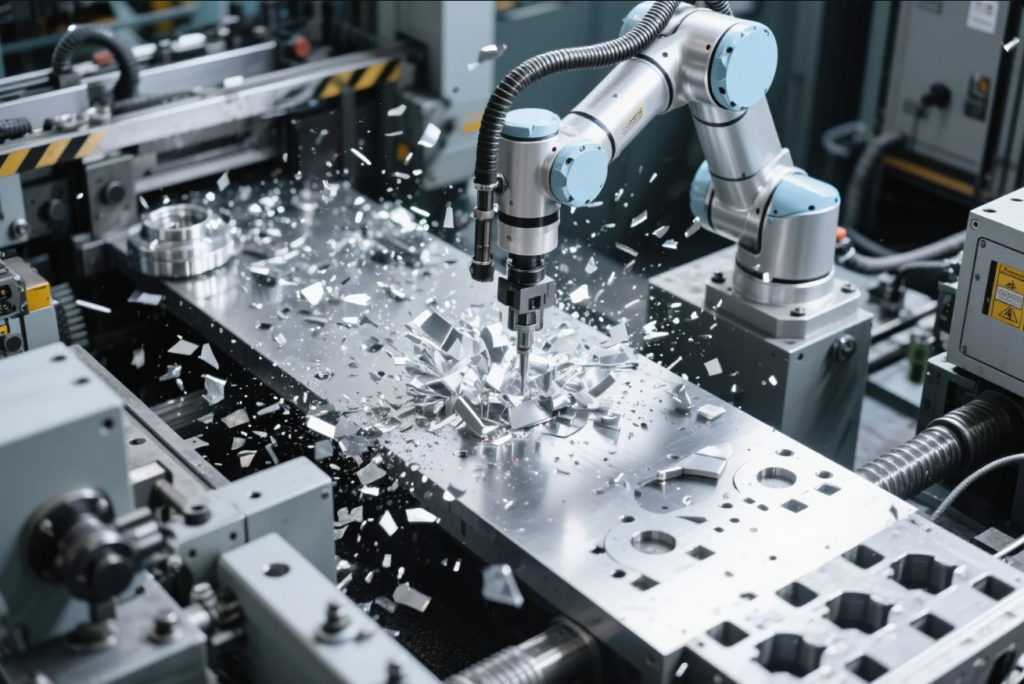
The ability to scale production while maintaining quality is a critical but often overlooked factor in manufacturer selection. As your product volumes grow, your manufacturing partner must be able to accommodate increased demand without compromising on quality or delivery performance.
Assessing Scalability in Stamping Manufacturers
Several factors contribute to a manufacturer’s ability to scale production effectively.
| Scalability Factor | Indicators of Strong Capability | Limitations to Watch For |
|---|---|---|
| Equipment Capacity | Multiple presses, automated systems | Single production line, manual processes |
| Workforce Flexibility | Cross-trained staff, multiple shifts | Limited skilled personnel |
| Production Planning | Advanced scheduling systems | Manual planning, frequent expediting |
| Supply Chain Management | Strong supplier relationships, inventory management | Material shortages, single-source dependencies |
| Quality Systems | Automated inspection, SPC implementation | Reliance on manual inspection |
During my facility tour at Prime, I noted their multiple production lines and cross-trained workforce, providing the flexibility to shift resources as demand fluctuates. Their capacity planning system demonstrated the ability to accommodate a 300% increase in my order volume without extending lead times, providing confidence in their ability to support growth.
Balancing Current Needs with Future Requirements
When selecting a manufacturing partner, it’s important to balance your current production needs with anticipated future requirements. The ideal partner should have:
- Sufficient excess capacity to accommodate short-term demand spikes
- Demonstrated ability to maintain quality during volume increases
- Scalable processes that don’t rely on specific individuals
- Investment plans for capacity expansion aligned with market trends
- Financial resources to support growth without compromising operations
This forward-looking assessment helps ensure that your manufacturing partnership can evolve as your business grows, avoiding the disruption of changing suppliers as volume increases.
What environmental and ethical practices should top stamping manufacturers follow?
I previously overlooked environmental practices when selecting suppliers, until customers began requiring sustainability documentation that my manufacturer couldn’t provide.
Leading stamping manufacturers implement responsible environmental practices including energy efficiency, waste reduction, and proper chemical management. These practices reduce environmental impact while often improving operational efficiency.
Environmental and ethical considerations have become increasingly important in manufacturing partnerships. Top 10 Quality Factors Stamping Parts Manufacturers Beyond regulatory compliance, these practices reflect a manufacturer’s values and long-term perspective, often correlating with their overall approach to quality and responsibility.
Environmental Responsibility in Stamping Operations
Several key areas define environmental performance in stamping manufacturing.
| Environmental Aspect | Best Practices | Benefits |
|---|---|---|
| Energy Efficiency | High-efficiency equipment, lighting | Reduced carbon footprint, lower costs |
| Material Utilization | Optimized nesting, scrap recycling | Reduced waste, improved material yield |
| Water Management | Closed-loop systems, treatment | Reduced consumption, compliance |
| Chemical Management | Proper storage, minimal usage | Workplace safety, reduced pollution |
| Waste Reduction | Recycling programs, reusable packaging | Landfill diversion, cost savings |
Prime’shttps://primecustomparts.com/ ISO 14001 certification demonstrates their commitment to environmental management systems. During my facility tour, I observed their material recycling program that recovers and reprocesses over 95% of metal scrap, significantly reducing waste while generating additional revenue that helps maintain competitive pricing.
Ethical Manufacturing Practices
Beyond environmental considerations, ethical manufacturing practices encompass:
- Fair labor practices and workplace safety
- Ethical sourcing of materials and conflict mineral compliance
- Community engagement and support
- Transparency in business operations
- Commitment to continuous improvement in sustainability
These practices reflect a manufacturer’s values and often correlate with their overall approach to quality and business relationships. Manufacturers who demonstrate responsibility in these areas typically bring the same conscientious approach to their production processes.
Contact Us
📧 Email us: [email protected]
🌐 Visit: https://primecustomparts.com
Get a free quote, custom tool configuration, and fast delivery worldwide. Every order comes with setup support.
Conclusion
Selecting the right stamping parts manufacturer requires evaluating multiple factors beyond price. Quality certification, material expertise, tooling precision, production capabilities, and effective communication create the foundation for successful manufacturing partnerships.

